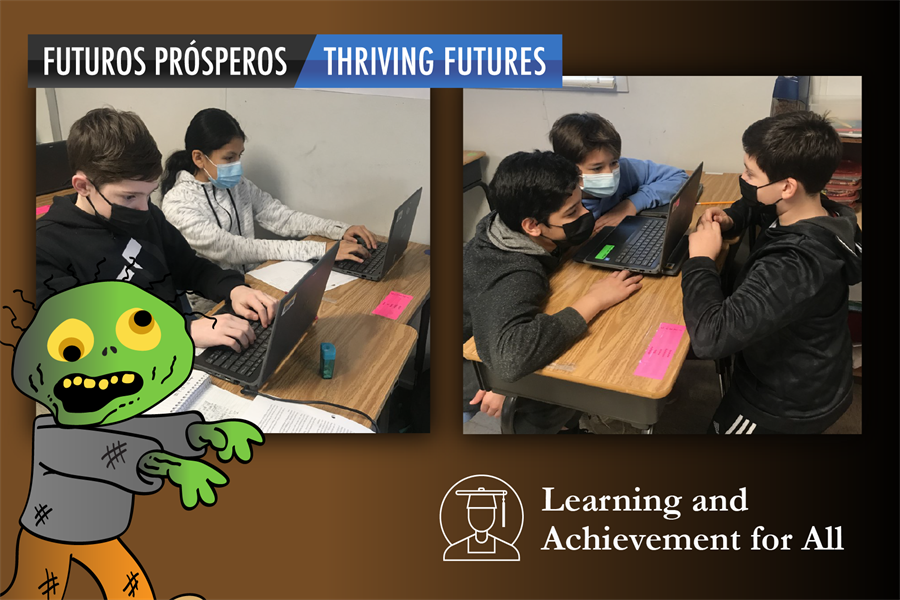
Do you have what it takes to survive a zombie invasion? Gainesville Middle School seventh graders were challenged with this question during an activity that motivated students to write, interact, and have fun.
It's 2028, and overnight a bizarre occurrence resulted in a third of the world's population becoming zombies. On the fifth day of the zombie invasion, stores are closed, and the main form of communication is social media, which includes reports of a safe camp located in Clarksville, Tennessee.
Utilizing critical thinking skills, communication, and teamwork, students planned the 681-mile trip to the safe camp. They were allowed to take 10 items from a list of survival supplies that included water, food, cell phones, and a first-aid kit. Individually, students kept a journal describing the team's decision-making process.
The objectives of the activity encouraged the use of real-world skills. Mary Ruth Spencer, a language arts teacher, explained, "We wanted students speaking, listening, reading, and writing, but while interacting, we wanted them to use the art of negotiation to achieve group goals."
The class assignment became the talk of the school. Spencer shared, "Reluctant writers were excited about this project, and we even heard students talking to each other about it in the school halls."
Seventh grader Clara Charlton was teamed with three other students. They selected a motorhome as their mode of transportation, and she was the driver. After driving through the night, they arrived safely at a gas station, where they spent the day. According to her journal entry that night, as they prepared to leave, they discovered a flat tire on the motorhome. Their trouble escalated when a social media post warned of zombies spotted about a quarter-mile from their location.
Clara writes in her journal, "There are around 10 zombies. One we could take, but 10 will be hard, unless we can distract them. I will write back later if I'm not zombified."
The student journals were graded on the use of correct grammar, figurative language, and following the steps of the writing process. Their communication during group decision-making discussions also factored into their grade.
